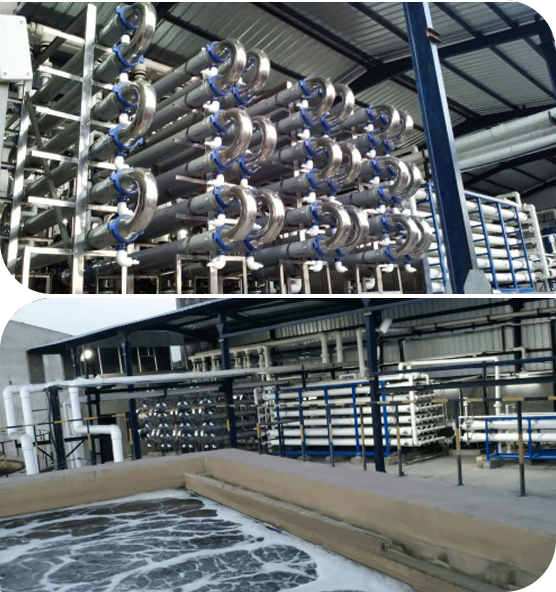
Waterman Engineers Australia is probably the main producers of Zero Liquid Discharge program. A ZLD program can be a cure course of action which happens to be made use of to eliminate the many liquid squander from a system. The goal of ZLD h2o cure is to scale back wastewater economically and make potable water that is fit for ordinary use. Zero discharge technique is an advanced treatment system that comprises ultrafiltration, reverse osmosis, evaporation and fractional electro deionization. And we're a nicely-recognised supplier of ZLD systems.
In several Industries, including power, oil & gasoline, chemicals, mining and Many others, a large amount of wastewater is created that must be managed. Conventionally, this discharge of wastewater is finished via a plant outfall to your surface drinking water body like an evaporation pond, or sometimes deep well injected. These procedures lead to a lot of environmental concerns by the public in lots of locations of the planet, as drinking water is usually a scarce source and its management really should be monitored. These concerns have resulted within the establishment of ZLD processes by quite a few industries to reduce their environmental footprint and improve sustainability. And, Waterman Engineers Australia are ideal ZLD suppliers you can find for this system.
Qualities OF ZERO LIQUID DISCHARGE Technique
The Houses of the Zero Liquid Discharge procedure can vary dependant upon the unique design and technologies employed. Even so, some prevalent Houses of ZLD programs include things like:
Drinking water Conservation: One among the key aims of ZLD techniques is always to conserve h2o by reducing the discharge of liquid waste into the environment.
High H2o Purity: ZLD programs are intended to generate higher-quality h2o that is certainly free of charge from impurities and contaminants, that makes them suited to use in many industrial procedures.
Versatility: ZLD units in many cases are created to support a broad range of input liquid streams, that makes them adaptable and suitable for use in several industries.
Sophisticated Wastewater Procedure: Zero liquid discharge techniques use advanced wastewater cure methods to take away impurities and contaminants in the effluent, manufacturing higher-excellent h2o.
Waste Reduction: ZLD programs assistance minimize squander by lessening the volume of liquid waste that needs to be disposed of and by manufacturing a concentrated, solid waste content that could be Zld System Manufacturer Zero Liquid Discharge System properly disposed of.
Power Effectiveness: ZLD programs is usually energy-intensive as a result of significant Electrical power requirements of evaporation along with other wastewater treatment method processes. Even so, advancements in technological know-how are making Zero liquid discharge methods much more Power-effective and cost-effective.
Waterman Engineers Australia manufactures Zero Liquid Discharge (ZLD) systems designed to remove all liquid squander, aiming to make potable drinking water and decrease environmental influence. Their ZLD methods typically involve ultrafiltration, reverse osmosis, evaporation, and fractional electro deionization. Critical technologies utilized are Slipping Film Brine Concentrators, Forced Circulation Crystallizer, and Many others, that has a two-phase process of pre-focus and evaporation/crystallization to Recuperate and reuse h2o. These techniques are adaptable to various industries, emphasizing h2o conservation, large h2o purity, waste reduction, and Electrical power effectiveness. Technical requirements are diverse and customizable, looking at variables like h2o source, stream charge, and feed h2o high quality.
The necessity for Zero Liquid Discharge (ZLD) systems arises with the necessity to handle environmental fears linked to drinking water scarcity and air pollution. In industries like energy, oil & gasoline, and mining, broad amounts of wastewater are produced. Ordinarily, this wastewater is discharged into bodies of water, leading to air pollution and depleting clean up h2o sources. ZLD programs purpose to attenuate these impacts by treating and recycling wastewater inside the commercial approach, thus conserving h2o, lessening squander, and advertising sustainability.
When contemplating the specialized requirements of a Zero Liquid Discharge (ZLD) technique, significant areas to focus on consist of the water source it will treat, the system's flow rate, the quality of feed h2o, the phases of treatment method included, the recovery price of water, solutions for focus disposal, resources of building, operating conditions, and procedure automation and Command. These components ensure the system's success, toughness, and efficiency in managing and recycling industrial wastewater.
Zero Liquid Discharge (ZLD) vegetation supply benefits which include drinking water conservation, squander reduction, and pollution avoidance, contributing to environmental sustainability. They're relevant in industries like electricity generation, oil and fuel, chemical substances, and mining, where by they help in running industrial wastewater proficiently, decreasing the ecological footprint, and complying with demanding environmental rules. These systems are critical in areas experiencing water scarcity and for industries aiming to enhance their sustainability and operational performance.
FAQs to get a Zero Liquid Discharge (ZLD) process frequently tackle its operational concepts, Expense-performance, maintenance demands, environmental effects, applicability across different industries, and regulatory compliance. These issues help consumers have an understanding of the system's Rewards, complex requires, and suitability for his or her specific wastewater management requirements.
1. Zero Liquid Discharge (ZLD) can be a wastewater procedure process made to eradicate all liquid waste.
2. The method's elements are influenced by the specific industrial method, wastewater composition, and regulatory needs.
3. Effluent remedy plants eliminate pollutants from textile effluents to stop environmental contamination.
4. Advantages consist of h2o conservation, air pollution reduction, and regulatory compliance.
5. The aim is to minimize environmental impact by recycling h2o and cutting down waste.
6-nine. Effluent treatment method vegetation are stages in wastewater procedure: Key (Bodily separation), secondary (biological procedure), and tertiary (Highly developed cure).
10. Device operations consist of filtration, sedimentation, Organic treatment method, and disinfection.
11. Restricting parameters are elements that affect the cure's effectiveness, like pH and contaminant focus.
12. Structure issues contain move fee, effluent composition, and preferred high-quality of taken care of h2o.